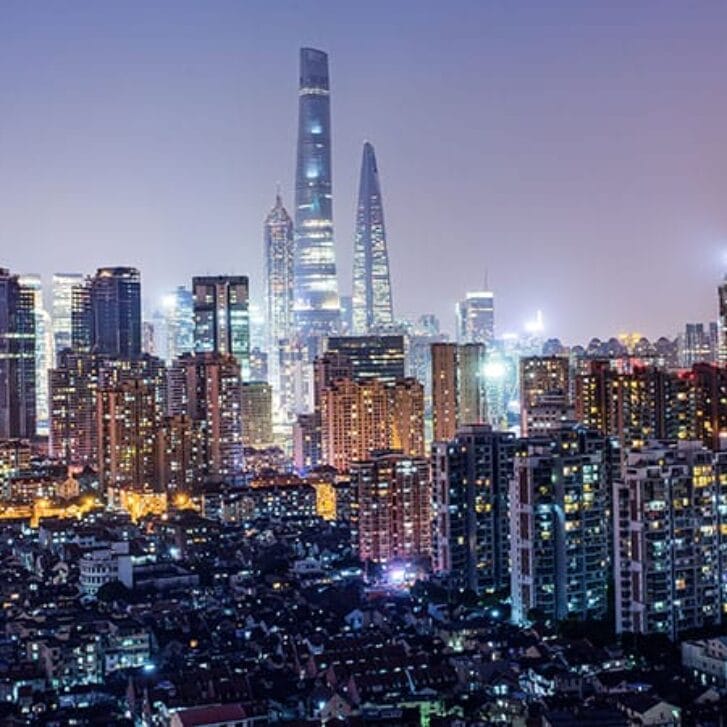I was in Delhi and Mumbai in October to meet with great Wharton alumni in India. After spending quite a bit of time in Beijing around the launch of the Penn Wharton China Center, I had been thinking about the economic trajectories of the world’s two most populous countries.
The bulls say India is “the next China,” a country of more than a billion people with the potential of growing at 10 percent a year for a long period. Odds are they are right—if not today, then within a decade or so. But even if India is the next China in terms of growth, India is a very different country than China on three fundamental dimensions.
1. India has demography on its side, whereas China faces serious demographic demons.
China is going to be the first country in history to be old before it’s rich. Its population will peak just below 1.5 billion in the next decade and then slowly shrink to about 1.3 billion people by mid-century. By 2050, China’s “dependency ratio”—that is, “dependents” (children and the aged) relative to people of working age—will double from 35 percent to 70 percent (the lasting effect of China’s one-child policy). This will put massive strains on the country’s nascent welfare state and struggling health system.
Demography isn’t destiny, but having a growing population with lots of working-age people is a great place to start.
On this critical dimension, India is in much stronger shape than China. By 2050, India will be the world’s largest country in terms of population by a wide margin over China, with a mind-boggling 1.7 billion people—400 million more than today. Over the next 35 years, its dependency ratio will actually decline from a bit over 50 percent today to a bit under 50 percent in 2050. Indians will live longer, so the aged population will grow considerably. With more affluence, India’s birth rate will come down too. But Indian fertility will remain high by all but African standards, and this will be a great foundational resource for the economy.
While a massive working-age population gives India the chance to become the world’s next growth titan, the country will have to work hard to translate its demographic windfall into much higher standards of living for average Indians. Economic productivity is the key.
2. China has been built on infrastructure, investment and manufacturing; India has barely scratched the surface on all three.
India began its economic reform in the early 1990s, more than a decade after China. But in the last-quarter century, China has accelerated its economy, while India’s has weakened comparatively. Why?
Chinese growth has been driven by some of the world’s highest investment rates. This has in turn made possible both an infrastructure revolution of new cities, high-speed rail lines, airports and ports, and manufacturing muscle that has been the envy of the world. China has been the world’s factory for 20 years. Its ability to quickly and efficiently move what it produces domestically and around the world has been a critical component in its growth miracle.
Today, India lags far behind China on all three fronts. India invests about 30 percent of its GDP, compared with about 50 percent in China. Manufacturing is about 20 percent of the Indian economy; it is about 30 percent of China’s. China has arguably the best physical infrastructure outside the Western world. India’s looks more like the poor country that it still is.
But this is a real opportunity for India. Increase investment. Improve infrastructure. Grow economic output. This is a tried-and-true path to growth, and it is one India is poised to follow.
Consider India’s vaunted tech sector. We all know about the incredible Indian talent running some of America’s tech icons. Google’s new CEO Sundar Pichai WG02, for example, did his undergraduate degree in India before coming to the U.S. for a Stanford master’s and a Wharton MBA. Likewise, Microsoft CEO Satya Nadella received his undergraduate degree in India and followed up with diplomas from U.S. graduate schools. These and so many other Indian-American tech sector executives are testament to the power of the immigration-innovation nexus in the U.S.
Don’t let these rock star CEOs fool anyone into thinking the only way for Indian technologists to succeed is to work in the U.S. for American firms. Home grown, and still home centered, companies like Tata Consultancy Services (TCS), Infosys and Wipro are real world leaders when it comes to information technology. And Indian entrepreneurs are killing it today in startups. I am so proud of Wharton alums who are leading the charge in their home country, people like Punit Soni WG07 at FlipKart and Kunal Bahl ENG06 W06 at SnapDeal.
The growth of Indian tech has been fueled by large-scale private-sector investment, from both India and abroad. These companies needed infrastructure to thrive, but the infrastructure was digital, not physical—allowing Indian IT firms to beam information and analysis from India to the world and back long before anyone was talking about “the cloud.” They didn’t need to ship widgets because their products were all in bits.
About a decade ago, some optimists thought India could leapfrog over the manufacturing and physical infrastructure stage of development (widgets) to build the whole economy around digital (bits). Today, it is clear that, while India’s tech sector is fantastic and growing, the whole, massive country will have to develop the old-fashioned way with better infrastructure and more manufacturing.
What will determine whether India can become a bit more Chinese when it comes to infrastructure and manufacturing? Unlike China, the answer will not be government investment because the Indian state is hamstrung by endemic budget deficits of big subsidies and limited taxation. The good news for India is that the private sector is ready to step in. But it seems that the private sector won’t act until it is more confident about politics.
3. Indian democracy is beyond vibrant, whereas China remains a one party state
I find Indians such delightful people to be around, and not only because so many of them share my love of cricket. Indians also love politics. To say Indian democracy is vibrant is an understatement. That is a wonderful thing when it comes to passion for public debate and participation in public discourse. But it creates challenges when it comes to the types of economic reform that the Chinese state simply does not encounter.
When the Chinese government wants to build a high-speed rail line, they just acquire the land and move and compensate the adversely affected people. There is often pushback, but it seems rarely enough to stop a major project going forward. Think the Three Gorges Dam, the world’s biggest hydroelectric power generator.
In India, a regular ironic complaint is “too much democracy.” Expanding and improving the national rail system would certainly be in the national interest. But the state-owned Indian Railways seems to want to defend the status quo, or at least take a long time to make and implement decisions. Raising government revenues to pay for major infrastructure improvements seems to be in the politically “too hard” box. And that is even before the battles are fought, one Indian state at a time, regarding acquiring land for new infrastructure politics.
The new Indian government of Narendra Modi is committed to changing all of this. The prime minister has made infrastructure a top priority. He wants to raise revenue through a GST (goods and services tax) that would be hard to evade. He wants to reduce the sand that Indian federalism currently throws into the wheels of Indian economic development. He even wants to loosen up Indian industrial relations.
But the early returns on PM Modi are that his great plans and powerful rhetoric are yet to translate into real change on the ground. One reason is that the government does not control the upper house of India’s Parliament. The upper house doesn’t have so much decision power, but it can slow down, if not block, government proposals. That is why Modi is spending so much time focused on upcoming state elections. There is a chance his BJP and its governing National Democratic Alliance coalition will do well enough to gain effective control of the national upper house. If that happens, Modi’s chances of enacting real economic reform will increase significantly.
There is nowhere India is more different from China than the world of politics. But this doesn’t mean that India won’t go on a growth charge the way China has. The raw material India has to work with is so rich. The challenge now is to catalyze it.
Editor’s note: The original version of this article appeared on LinkedIn on Oct. 28, 2015.


























